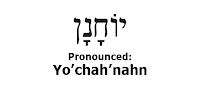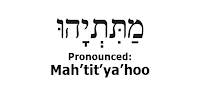Setting the Shabbat Table
The Shabbat table is customarily set for a grand feast and adorned with one’s most beautiful utensils. Beyond beautiful settings, however, there are certain “essentials” that are traditionally purchased to enhance the Shabbat table.
1. Candlesticks: The Shabbat candles are most often placed on or near the Shabbat table. While a minimum of two candles are lit, many have the custom of lighting one candle for each member of the household. Shining silver candlesticks are symbolic of Shabbat (although any candleholders will do.)
2. Kiddush Cup: Kiddush is the blessing of sanctification that declares the Sabbath day to be holy. The cup used for kiddush must contain at least 3 fluid ounces of wine or grape juice. Kiddush cups come in a range of sizes and styles and are most often crafted in silver (although some are glass). Some distribute small amounts of the kiddush wine to family members and guests in mini-kiddush cups.
3. Challah Cover: It is customary to cover the challah (braided Shabbat bread) with a special cover during the recitation of kiddush. There is a remarkable range of beautiful challah covers available, with some people preferring a velvet cover, while others choose painted silk. There are even leather challah covers.
4. Challah Board and Knife: After the blessing of Ha'mo'tzee, the challah is cut and distributed to all present. Challah boards are made from a variety of materials (wood, glass, marble, etc). It is also customary to have a special Challah knife with a decorative handle.
All of the above items can be found at your local or online Judaica store. While it is traditional to purchase silver candlesticks, kiddush cups and challah knives, there is no obligation to do so.
Twebrew School: Shabbat is brought to you on behalf of Shabbat Across America and Shabbat Across Canada, the only cross-continental celebration of Shabbat. The fourteenth annual SAA/C will take place on March 5, 2010. To learn more, click here.
Copyright © 2010 National Jewish Outreach Program. All rights reserved.
1. Candlesticks: The Shabbat candles are most often placed on or near the Shabbat table. While a minimum of two candles are lit, many have the custom of lighting one candle for each member of the household. Shining silver candlesticks are symbolic of Shabbat (although any candleholders will do.)
2. Kiddush Cup: Kiddush is the blessing of sanctification that declares the Sabbath day to be holy. The cup used for kiddush must contain at least 3 fluid ounces of wine or grape juice. Kiddush cups come in a range of sizes and styles and are most often crafted in silver (although some are glass). Some distribute small amounts of the kiddush wine to family members and guests in mini-kiddush cups.
3. Challah Cover: It is customary to cover the challah (braided Shabbat bread) with a special cover during the recitation of kiddush. There is a remarkable range of beautiful challah covers available, with some people preferring a velvet cover, while others choose painted silk. There are even leather challah covers.
4. Challah Board and Knife: After the blessing of Ha'mo'tzee, the challah is cut and distributed to all present. Challah boards are made from a variety of materials (wood, glass, marble, etc). It is also customary to have a special Challah knife with a decorative handle.
All of the above items can be found at your local or online Judaica store. While it is traditional to purchase silver candlesticks, kiddush cups and challah knives, there is no obligation to do so.
Twebrew School: Shabbat is brought to you on behalf of Shabbat Across America and Shabbat Across Canada, the only cross-
Copyright © 2010 National Jewish Outreach Program. All rights reserved.


Comments
Post a Comment